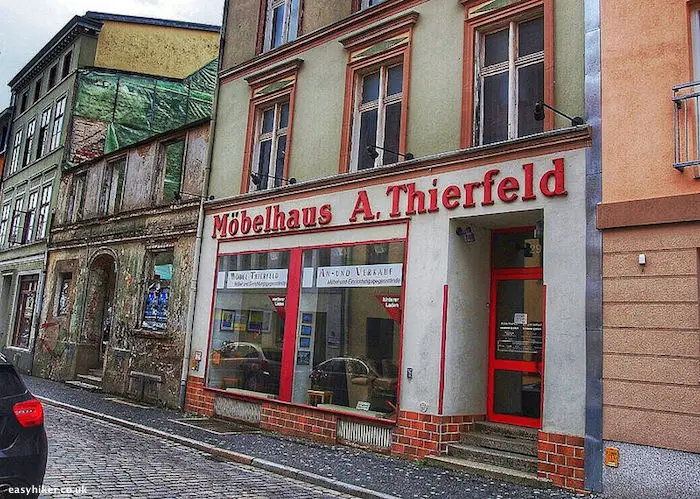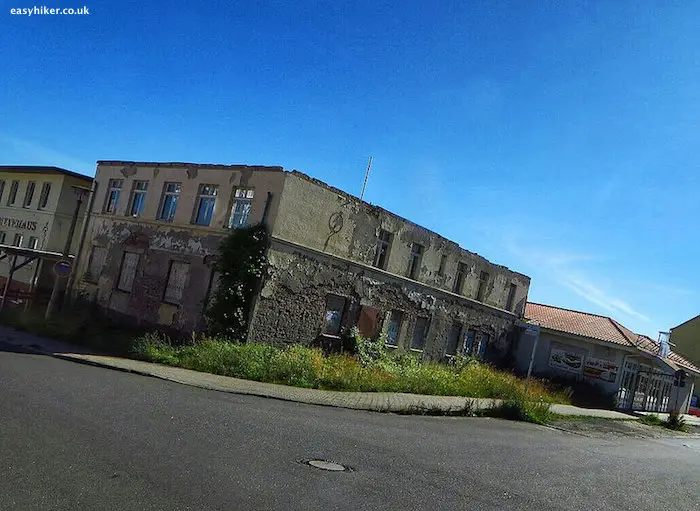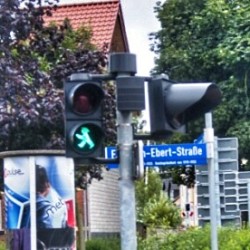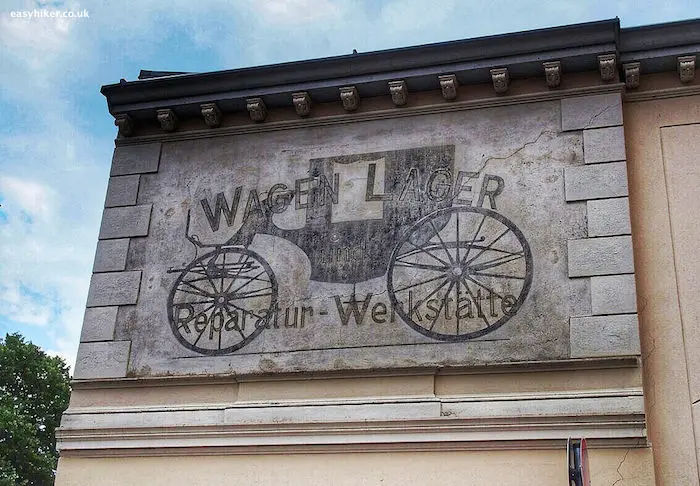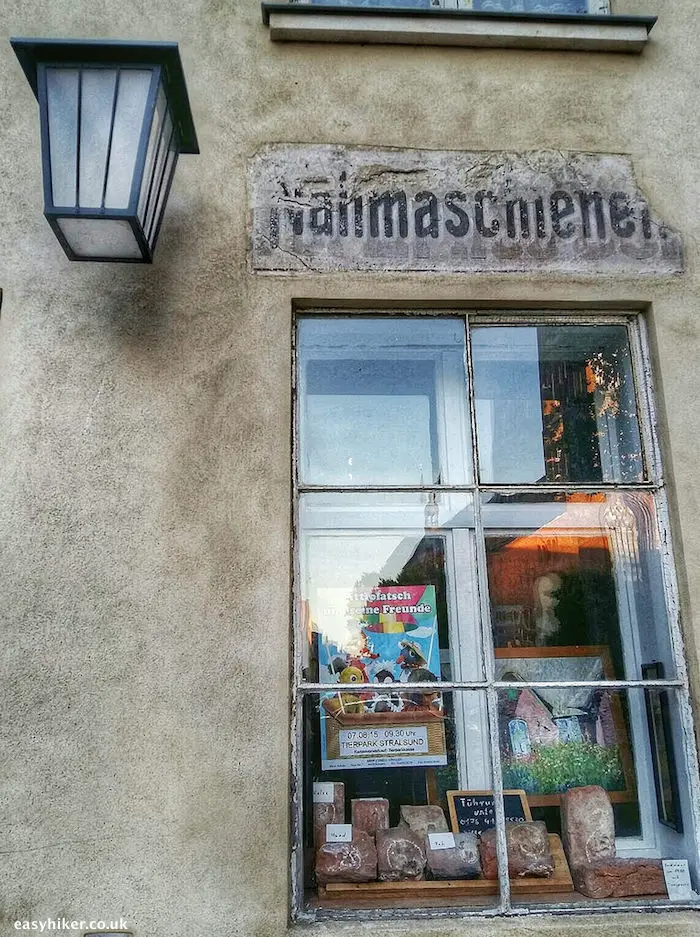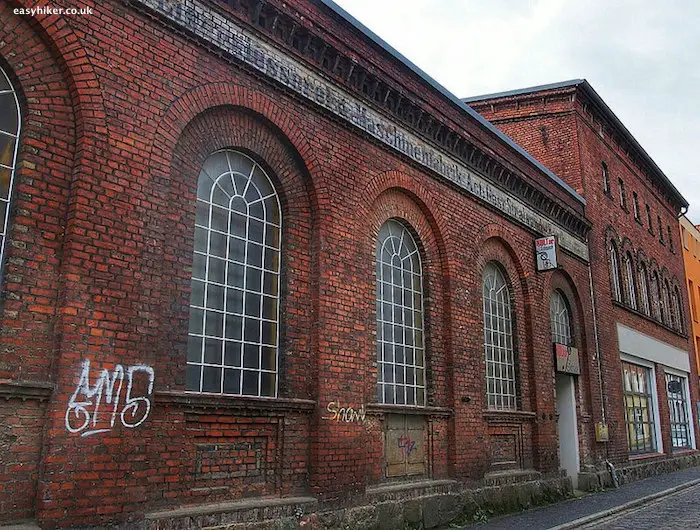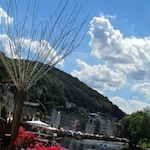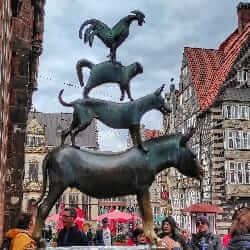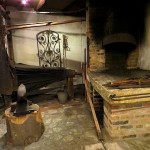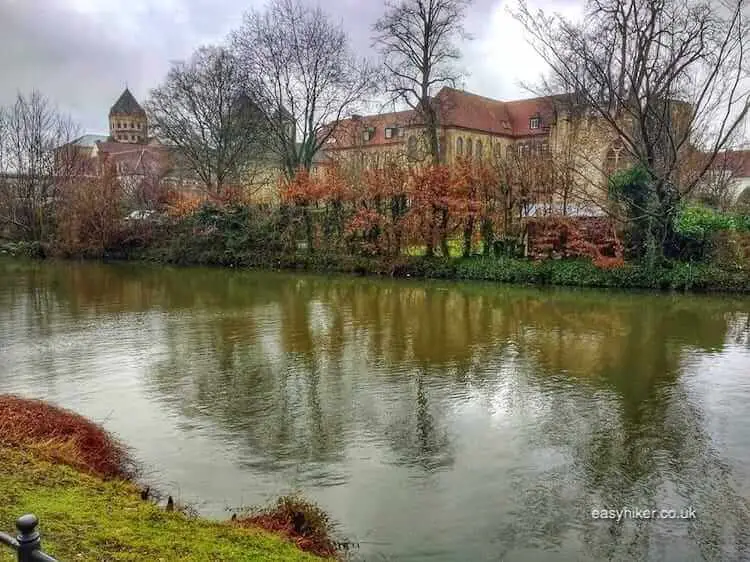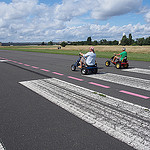… and when the twain finally did meet, two worlds collided – and two rival viewpoints of history.
Two trillion dollars have been spent. This is not a trifling amount, even for one of the world’s richest nations. Still, East Germany – after 25 years of reconstruction – has preserved an Eastness about it which is not easy to define but easy to recognize, even by people who do not know Germany all that well.
For one, many – perhaps most – but not all buildings have been renovated. In many towns and cities, Detroit can still pounce on you only a few blocks behind the showpiece Old Towns and reconstructed boulevards.
But for every “cannot”, there is at least one “do not want”. The symbol for East Germany’s determination to remain “true to itself” is the green light guy …… who, 25 years after reunification, is still carrying his massive bundle or his big stick or whatever he appears to be holding over East Germany’s pedestrian crossings.
Maybe it is the torch of the “Not everything was bad” movement: many streets in the former Soviet-run part of Germany still carry the names of Karl Marx and Rosa Luxemburg (pre-1945 communists are apparently acceptable), and there is a surprisingly large number of people’s- owned-this and people’s-operated-that, from shipbuilders to nursery schools.
Above all, however, a cloud of defiant provincialism still hangs over much of East Germany, a refusal to imitate what they see as “Wessie” (for which read: Anglo-Saxon, decadent and alien) and what people in West Germany think is “cool”, metropolitan and international (a certain type of architecture, of dress, of almost anything).
At its best, this can come cross as sweet and oddly charming, in an Asterix-and-Obelix-Gallic-village kind of way, but at its worst, it can seem stuffy, inward-looking and downright hostile. The shopkeepers of the BBC TV cult comedy series League of Gentlemen would recognize many East German cities as “local towns for local people”.
Briefly, what happened is this: when the two Germanies reunified in the early 1990s, much of East Germany – although by no means all of it – was so shocked at the New World they had to join that they withdrew into a time capsule.
At the same time, however, the West German developers – who were taking stock of their country’s new regions and their potential – found much badly decayed building fabric, but also something that rather caught their eye: traces of 1930s everyday life. This was something that their fathers had brutally excised from the towns of post-war West Germany: the 1930s, after all, was the decade Whose Name Must Not Be Spoken.
The East, conversely, had – post 1945 – simply not enough money for such a complete makeover. This is why many of the old inscriptions and shop names have survived: often, they may have been hastily over painted but in such a way that they could later be recovered: names of long-defunct businesses …
… and long-defunct spellings …
… witnesses of a time when magnificently elegant “furniture factories” …
… and even far less magnificent or elegant “foundry and heavy engineering” businesses were allowed to operate in residential streets, next door to family homes, schools and bakeries.
Now, in the New World of the 21st century, these traces of a forgotten period are no longer hidden but lovingly preserved. Because even in the 1930s, of course, not everything had been bad.

